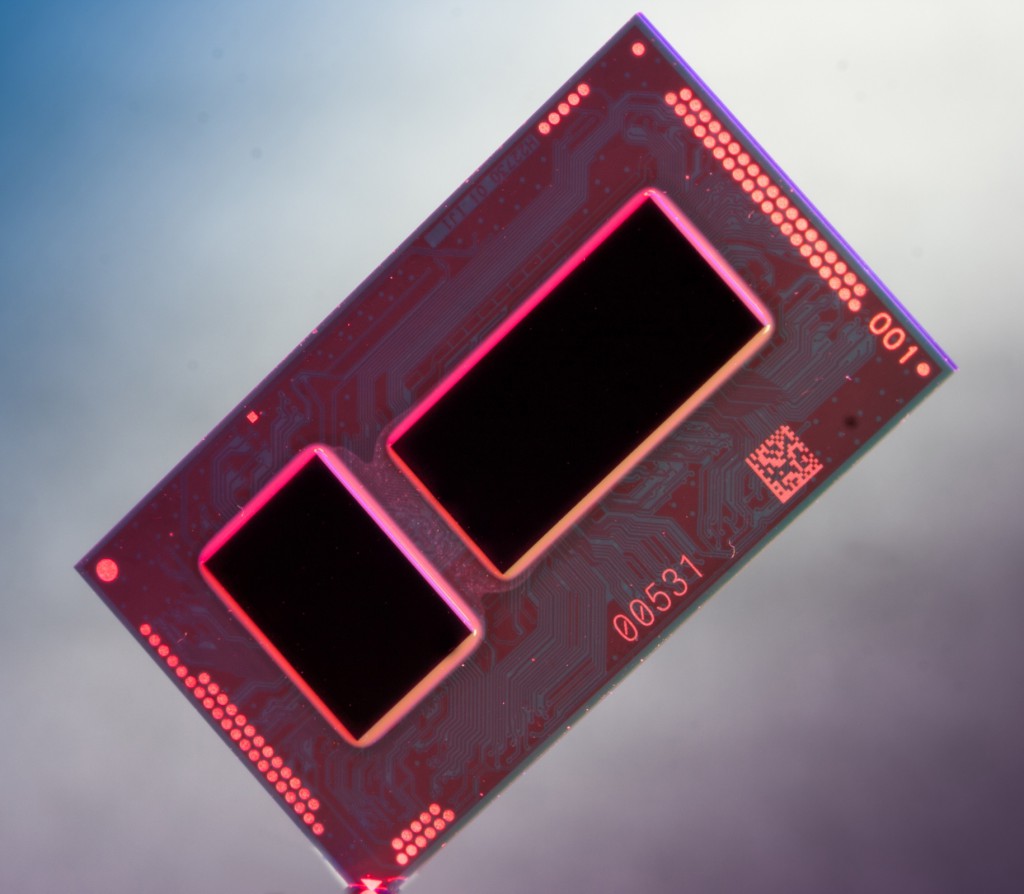A technology enthusiast has conducted the first benchmarks of Intel Core i7-5500U “Broadwell” processor’s integrated graphics engine and compared it to that of Intel Core i7-4510U “Haswell” processor. While the results are promising, they do not demonstrate any radical performance boosts.
Intel Corp. has been gradually improving performance and capabilities of its integrated graphics processors for many years now, in 2015 the company will bump up performance of its graphics processing units two times: when it releases the code-named “Broadwell” chips and when it releases the code-named “Skylake” CPUs. According to early benchmarks of the “Broadwell” GPU, the new graphics adapter will be around 20 per cent faster than existing “Haswell” GPUs at the same wattage, but there are no wonders here: the new microprocessors feature higher amount of execution units and are made using thinner fabrication process.
The Dave Channel from YouTube has managed to obtain two laptops featuring similar specifications, but based on the Core i7-5500U and the Core i7-4510U processors. Both CPUs are ultra-low-power system-on-chips that integrate core-logic sets and are designed for the same market segment. SweClockers web-site has found performance results of the two systems in 3DMark Vantage’s database: the Core i7-4510U-based PC scored P3868, whereas the Core i7-5500U-powered laptop scored P5124.

Given that the new “Broadwell” chips feature higher clock-rates and increased amount of execution units, it is not surprising that they get around 20 per cent higher benchmark scores.
What is unexpected is that the new eighth-generation (Gen8) Intel graphics architecture does not have a lot of advantages over Gen7.5 graphics architecture (which is used with “Haswell” processors). The Gen8 architecture sports execution units (EUs) with 2*4-wide vector SIMDs with both simultaneous multi-threading (SMT) and fine-grained interleaved multi-threading (IMT). By contrast, the Gen7.5 graphics architecture is based on EUs featuring 2*4 wide vector SIMDs with “only” SMT technology.
It looks like the main advantage that the “Broadwell” and “Skylake” Gen8 graphics will have over Gen7.5 graphics of the “Haswell” is increased amount of execution units, which is not bad. The ability to increase the number of EUs is enabled by thinner process technology and better designs. The maximum amount of EUs in the “Skylake” CPUs will be 72, therefore, their performance will be significantly higher than that of today's solutions.
Intel did not comment on the news-story.
Discuss on our Facebook page, HERE.
KitGuru Says: The results that the Core i7-5500U “Broadwell” central processing unit demonstrated in 3DMark Vantage look pretty good for a 15W microprocessor. Of course, we hoped that the Gen8 graphics with IMT technology will bring more advantages, but given the fact that we are only talking about one benchmark, it is hard to draw any solid conclusions here.
 KitGuru KitGuru.net – Tech News | Hardware News | Hardware Reviews | IOS | Mobile | Gaming | Graphics Cards
KitGuru KitGuru.net – Tech News | Hardware News | Hardware Reviews | IOS | Mobile | Gaming | Graphics Cards



